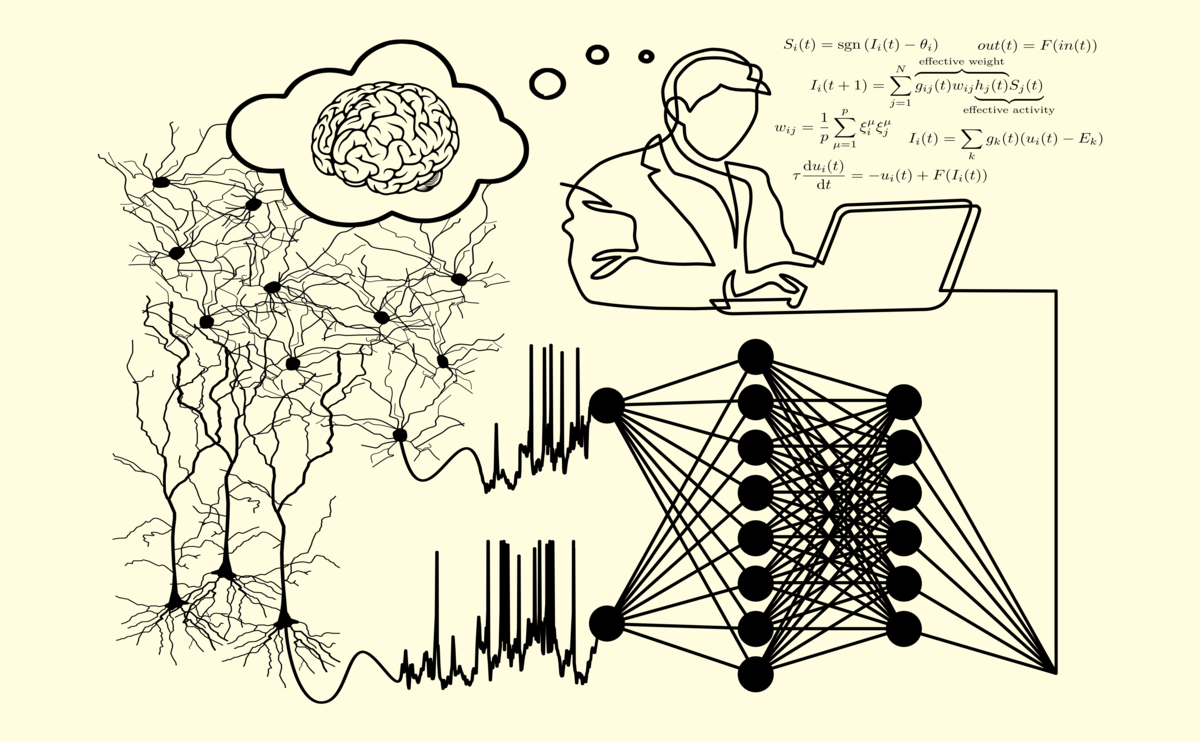Main Content
Theoretical and computational neuroscience
We build theoretical models, from single cells to large networks, to elucidate how the brain transforms sensation into behaviour
We are constantly stimulated by what we see, hear, smell, taste, and touch. Our brains take these complex inputs and transform them into actions and thoughts through what we call input/output functions. Every part of the brain, from single neurons to entire brain regions, can be described by such functions. Finding their accurate description has the potential to change lives, both through improved treatments for mental illness as well as better algorithms for artificial intelligence.
Input/output
Our aim is to mathematically describe how the brain translates sensory input into behaviour at various spatial and temporal scales. We focus on how inputs onto a single neuron generate its output activity, and how neuronal networks process complex information.
Theoretical tools to understand the brain
Computers, as well as pen and paper, are the tools that, through mathematical analysis and simulations, will allow us to unveil how the brain processes information.
From models to experiments and back
Simulations allow us to compare a large variety of different scenarios, which are impossible to access via modern experimental technologies. Experimental work is essential for us to build our models, and in turn, our models will serve as inspiration for future experiments in a continuing incremental loop. The result is that, together, theory and experiments will help us shine a light on the mysteries of the brain, with countless applications to improve our lives, from health to technology.
Team
Postdoctoral Fellows
Dr. Severin Berger Biozentrum, Room: 8.046
PhD Students
Aziza Lecerf Biozentrum, Room: 08.046
Master Students
Yixin Chen Biozentrum, Room: 08.046




